Energy potential of the Millungera Basin: a newly discovered basin in north Queensland
Russell Korsch A , Heike Struckmeyer A , Alison Kirkby A , Laurie Hutton B , Lidena Carr C , Kinta Hoffmann D , Richard Chopping E , Indrajit Roy E , Melanie Fitzell F , Jennifer Totterdell G , Malcolm Nicoll G and Benham Talebi HA Geoscience Australia
B Geological Survey of Queensland
C Geoscience Australia
D Geological Survey of Queensland
E Geoscience Australia
F Geological Survey of Queensland
G Geoscience Australia
H Geological Survey of Queensland
The APPEA Journal 51(1) 295-332 https://doi.org/10.1071/AJ10020
Published: 2011
Abstract
Deep seismic reflection surveys in north Queensland that were collected in 2006 and 2007 discovered a previously unknown sedimentary basin, now named the Millungera Basin, which is completely covered by a thin succession of sediments of the Jurassic–Cretaceous, Eromanga-Carpentaria Basin. Interpretation of regional aeromagnetic data suggests that the basin could have areal dimensions of up to 280 km by 95 km. Apart from regional geophysical data, virtually no confirmed geological information exists on the basin. To complement the seismic data, new magnetotelluric data have been acquired on several lines across the basin. An angular unconformity between the Eromanga and Millungera basins indicates that the upper part of the Millungera Basin was eroded prior to deposition of the Eromanga-Carpentaria Basin. Both the western and eastern margins of the Millungera Basin are truncated by thrust faults, with well-developed hangingwall anticlines occurring above the thrusts at the eastern margin. The basin thickens slightly to the east, to a maximum preserved subsurface depth of ˜3,370 m. Using sequence stratigraphic principles, three discrete sequences have been mapped. The geometry of the stratigraphic sequences, the post-depositional thrust margins, and the erosional unconformity at the top of the succession all indicate that the original succession across much of the basin was thicker–by up to at least 1,500 m–than preserved today. The age of the Millungera Basin is unknown, but petroleum systems modelling has been carried out using two scenarios, that is, that the sediment fill is equivalent in age to (1) the Neoproterozoic-Devonian Georgina Basin, or (2) the Permian–Triassic Lovelle Depression of the Galilee Basin. Using the Georgina Basin analogue, potential Cambrian source rocks are likely to be mature over most of the Millungera Basin, with significant generation and expulsion of hydrocarbons occurring in two phases, in response to Ordovician and Cretaceous sediment loading. For the Galilee Basin analogue, potential Permian source rocks are likely to be oil mature in the central Millungera Basin, but immature on the basin margins. Significant oil generation and expulsion probably occurred during the Triassic, in response to late Permian to Early Triassic sediment loading. Based on the seismic and potential field data, several granites are interpreted to occur immediately below the Millungera Basin, raising the possibility of hot rock geothermal plays. Depending on its composition, the Millungera Basin could provide a thermal blanket to trap any heat which is generated. 3D inversion of potential field data suggests that the inferred granites range from being magnetic to nonmagnetic, and felsic (less dense) to more mafic. They may be part of the Williams Supersuite, which is enriched in uranium, thorium and potassium, and exposed just to the west, in the Mount Isa Province. 3D gravity modelling suggests that the inferred granites have a possible maximum thickness of up to 5.5 km. Therefore, if granites with the composition of the Williams Supersuite occur beneath the Millungera Basin, in the volumes indicated by gravity inversions, then, based on the forward temperature modelling, there is a good probability that the basin is prospective for geothermal energy.
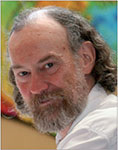
Russell Korsch is a group leader in the Onshore Energy and Minerals Division at Geoscience Australia and is responsible for the onshore petroleum and energy geodynamics components of the Australian Government’s Onshore Energy Security Program. He has a BSc (hons), PhD and DipEd from the University of New England, with a background in structural geology and tectonics, and has been involved in understanding the evolution of sedimentary basins and in the geological and geodynamic interpretation of deep seismic data collected by Geoscience Australia and partners during several years. He is on the Executive of the Editorial Board of Australian Journal of Earth Sciences and a Fellow of the Geological Society of America. Member: PESA, GSA, GSNZ. Russell.Korsch@ga.gov.au |
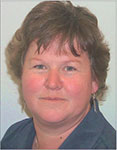
Heike Struckmeyer is a principal research scientist in Geoscience Australia’s petroleum and marine division. She graduated from the University of GÖttingen, Germany, in 1981 and received a PhD from Wollongong University in 1989. Since joining Geoscience Australia in 1988, her work has been focused on the evolution and prospectivity of Australia’s northern, northwestern, eastern and southern margins, and on regional basin analysis and petroleum systems modelling. In recent years, she has worked on projects in the Browse, Bight and Arafura Basins. Member: AAPG, PESA. Heike.Struckmeyer@ga.gov.au |
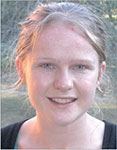
Alison Kirkby graduated from the University of Auckland in 2008 with an MSc in geology, in which she studied the magnetic and gravity characteristics of the Hauraki Rift in the central North Island of New Zealand. She joined Geoscience Australia in the same year, and now works in the geothermal project, where she is involved in the collection and processing of new heat flow data across the Australian continent. Alison.Kirkby@ga.gov.au |
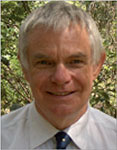
Laurie Hutton graduated from the University of Queensland in 1972, completing Honours the following year. Since then he has been involved in regional geological mapping in Queensland. From 1975 until 1981, he was involved in the geological mapping program at Mount Isa. In 2004, he was awarded a Doctor of Philosophy for a thesis on mapping in the Pentland area of Queensland. From 2004–2009, he was involved in the remapping of the Mount Isa region. This project included deep crustal seismic profiling. During this project, the Millungera Basin was first discovered, and has since been the focus of other studies. Laurie.Hutton@deedi.qld.gov.au |
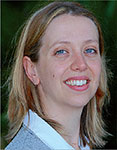
Lidena is a geologist for the onshore petroleum project in the onshore energy and minerals division at Geoscience Australia. She graduated from ANU with a BA/BSc ( geology and human ecology) (Hons) in 2004, and began working as a technical officer at the Research School of Earth Sciences (ANU). In 2007, she joined Geoscience Australia with the then ACRES, before moving to her position in early 2009. Lidena.Carr@ga.gov.au |
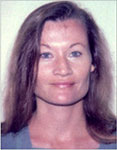
Kinta Hoffmann graduated from James Cook University in 1984 with a BSc Geology (hons) researching the oil shale in the Toolebuc Formation. After working briefly for ESSO Minerals and as a curator of the JCU Geology Department, she joined the Geological Survey of Queensland in 1986 and has been involved in basin studies of the Cooper, Eromanga, Adavale, Surat and Bowen basins. She is now working with Geoscience Australia and ANU in collaborative marine geoscientific research off northeast Australia. Kinta.Hoffmann@deedi.qld.gov.au |
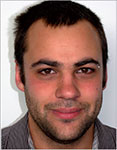
Richard Chopping joined Geoscience Australia in 2005 after completing Honours in geophysics at the University of Tasmania. He has recently completed a MSc in earth physics at ANU. Initially sceptical as to the value of mineralogy and chemical alteration in understanding geophysical response, Richard has spent the last three years worrying about how chemical changes in rocks will change their geophysical response. Richard.Chopping@ga.gov.au |
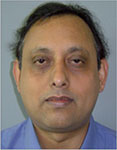
Indrajit Roy is a project geophysicist in the Onshore Energy and Mineral Division, Geoscience Australia. His research interests are geophysical data processing, modelling and synthesis. He has been involved extensively in a wide range of geoscience research, which includes waveform inversion of seismic data, rock physics and reservoir characterisation, potential field data processing and modelling, and solid earth and environmental geophysics. He has conducted independent research on various scientific projects, supervised graduate students and offered various courses on geophysics. Member: ASEG, SEG and AGU. Indrajit.Roy@ga.gov.au |
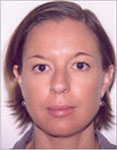
Melanie Fitzell joined the Geological Survey of Queensland in 2003. She has worked on several regional mapping projects throughout Queensland and has developed an interest in 3D geological mapping and modelling. Melanie moved into the Energy Unit in late 2008 to develop skills in seismic interpretation and basin analysis studies. Melanie was assigned to the Coastal Geothermal Energy Initiative team in mid 2009. Melanie.Fitzell@deedi.qld.gov.au |
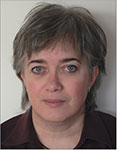
Jennie Totterdell is a principal research scientist in Geoscience Australia’s petroleum and marine division and project leader of the Southern Frontiers project. Since graduating from ANU, Jennie has worked on a range of regional, thematic and basin studies at Geoscience Australia. In the previous 10 years, her work has focused on offshore frontier basins, notably the Bight, Arafura and Browse basins. Her main areas of interest are the structural and stratigraphic evolution and petroleum potential of the southern Australian margin. Member: PESA. Jennifer.Totterdell@ga.gov.au |
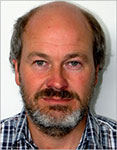
Malcolm Nicoll is a geoscience technologist in the Onshore Energy and Minerals Division at Geoscience Australia, and has a Diploma of Applied Science (Geoscience). He specialises in 3D data integration, model construction and visualisation technology. He joined Bureau of Mineral Resources in 1989 and has worked mainly on sedimentary basin studies and hard rock mineral terranes, and has also applied these skills in the geohazards and groundwater domains. Malcolm.Nicoll@ga.gov.au |
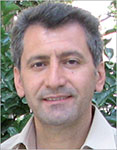
Behnam Talebi completed his postgraduate studies in geothermal energy technology at the University of Auckland in New Zealand in 1996. In the past 17 years, he has been involved in a number of geothermal energy projects overseas from reconnaissance studies through to field exploration and development programs. In the past six years, he has been project manager for a 55MWe geothermal power development project in northwest Iran and led exploration, delineation and production drilling programs as well as field development and power plant construction. Behnam joined the Geological Survey of Queensland in September 2009 as program leader for the Queensland Coastal Geothermal Energy Initiative program. Benham.Talebi@deedi.qld.gov.au |


